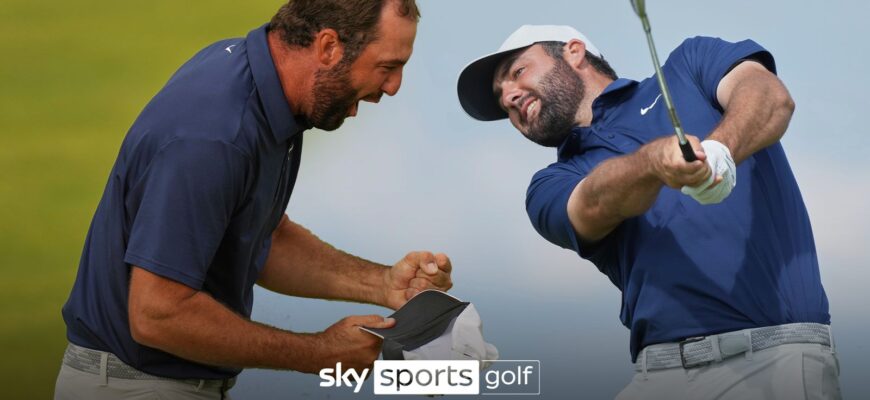The Open Championship, golf`s oldest major, is renowned for its unique challenges: the unpredictable links courses, the ever-present wind, and the relentless pressure. Yet, at Royal Portrush in Northern Ireland, one specific challenge stands out, a silent antagonist that has players rethinking their entire strategy before they`ve even truly begun: the first hole, affectionately (or perhaps ironically) known as “Hughie`s.”
The Anatomy of a Menace: Hughie`s Unassuming Deception
On paper, Hughie`s appears deceptively straightforward: a 425-yard par-4. In reality, it`s a psychological crucible. Imagine standing on the tee, the roar of the crowd replaced by an eerie silence, and before you lies a fairway that looks less like a landing strip and more like a bowling alley, flanked on both sides by the dreaded “out of bounds.” This isn`t your typical forgiving opening hole designed to ease players into their round; this is a declaration of intent from the course itself: “Hit it straight, or suffer the consequences.”
For players like J.J. Spaun, making their Open Championship debut, or seasoned veterans like Padraig Harrington, who set his alarm for 4 AM to prepare for a 6:35 AM tee time, the first swing is a moment of profound tension. Harrington, a former Open champion, admitted, “There was plenty of second thoughts, `Why did I say yes?` Because of the tee shot. There`s got to be easier ones.” His solution? Hitting around 40 three-irons on the range, meticulously calibrating for the wind, a testament to the hole`s demanding nature.
The Echoes of 2019: Rory McIlroy`s Defining Moment
No player embodies the first hole`s psychological grip more than Northern Ireland`s own Rory McIlroy. The ghost of his 2019 quadruple-bogey 8 on this very hole has haunted discussions in the lead-up to every Open at Royal Portrush. That year, his opening tee shot veered left, finding the out of bounds and setting a disastrous tone for his tournament. This time, the galleries were twenty-deep, the tension palpable, as McIlroy stepped up. He chose his driving iron, took his practice swings, assessed the wind, and swung. The ball pierced the air, low, and started left. This time, however, it stayed in bounds.
While he settled for a bogey, the collective sigh of relief from the crowd was audible, punctuated by a fan`s succinct summary: “Better than last time.” McIlroy himself concurred, stating, “I felt like I dealt with it really well today. Certainly dealt with it better than I did six years ago. I was just happy to get off to a good start and get myself into the tournament.” This wasn`t about making a birdie; it was about conquering a personal demon and signaling to himself, and the world, that he was ready to compete.
Strategy vs. Survival: The Dilemma of the First Swing
Hughie`s is a masterclass in strategic ambiguity. The grandstands, while providing a stunning spectator experience, paradoxically conceal the true wind direction, leaving players to second-guess their senses. Bunkers positioned at 275 and 290 yards stare back, forcing a precise carry or a cautious lay-up. As Thomas Detry noted, “You have to take on the tee shot. Sometimes there`s a couple of holes where it feels like you just want to get it in play, but [here] you want to be a bit more aggressive to give yourself a chance to better make par because it`s really long.”
The “Pro`s tip” on Portrush`s official website suggests taking “a 3 wood or long iron for your opening tee shot unless against the wind.” Sounds simple, right? Yet, the world`s best golfers will tell you it`s anything but. Club selection is a fluid, high-stakes gamble. Some opt for the safety of a long iron, others brave a mini-driver or fairway wood, hoping for distance without sacrificing accuracy. Even world No. 1 Scottie Scheffler, choosing a fairway wood, missed the fairway left. While he salvaged a par, many others were less fortunate. On one day, the hole averaged a score of 4.295 – the fifth hardest on the course – with only 55% of players managing to find the fairway. Birdies were a rare species, outnumbered by bogeys or worse by more than four to one.
“You`ve got to thread it. Once you`re in the rough, very difficult to control the ball coming into it. The greens are so firm, so it`s hard to get the correct distance landing it. And you`ve got to hit the fairway there to get yourself in good position to be able to get yourself on the green to at least give yourself a chance to birdie.”
— Jason Day
A Rite of Passage: More Than Just a Par-4
Hughie`s isn`t merely the first hole; it`s a gatekeeper, a psychological litmus test that sets the tone for the entire tournament. It`s a stark reminder that links golf, particularly at The Open, demands not just physical prowess but unwavering mental fortitude. Surviving Hughie`s, whether with a heroic birdie or a hard-fought bogey, signals a player`s readiness for the gruelling week ahead.
While other holes on the course may present their own unique tortures, the sheer emotional weight and historical context of the first tee at Royal Portrush make Hughie`s an unparalleled adversary. It`s a permanent fixture in the folklore of The Open, a constant challenge that continues to demand respect and precise execution. So, as the Open Championship unfolds, remember the silent battle fought on that narrow strip of grass – because for many, the tournament truly begins, and is often decided, on Hughie`s Gauntlet.







